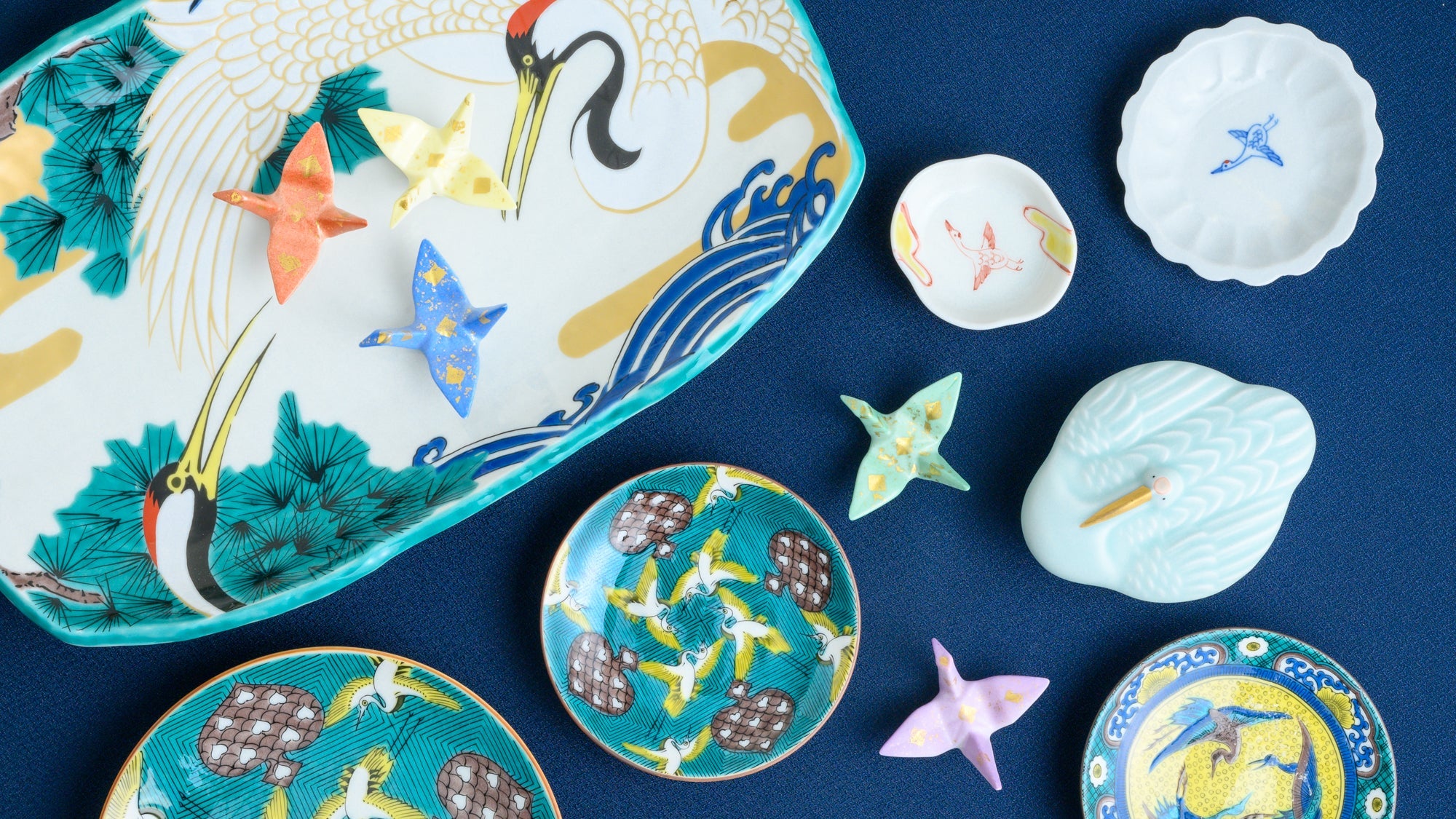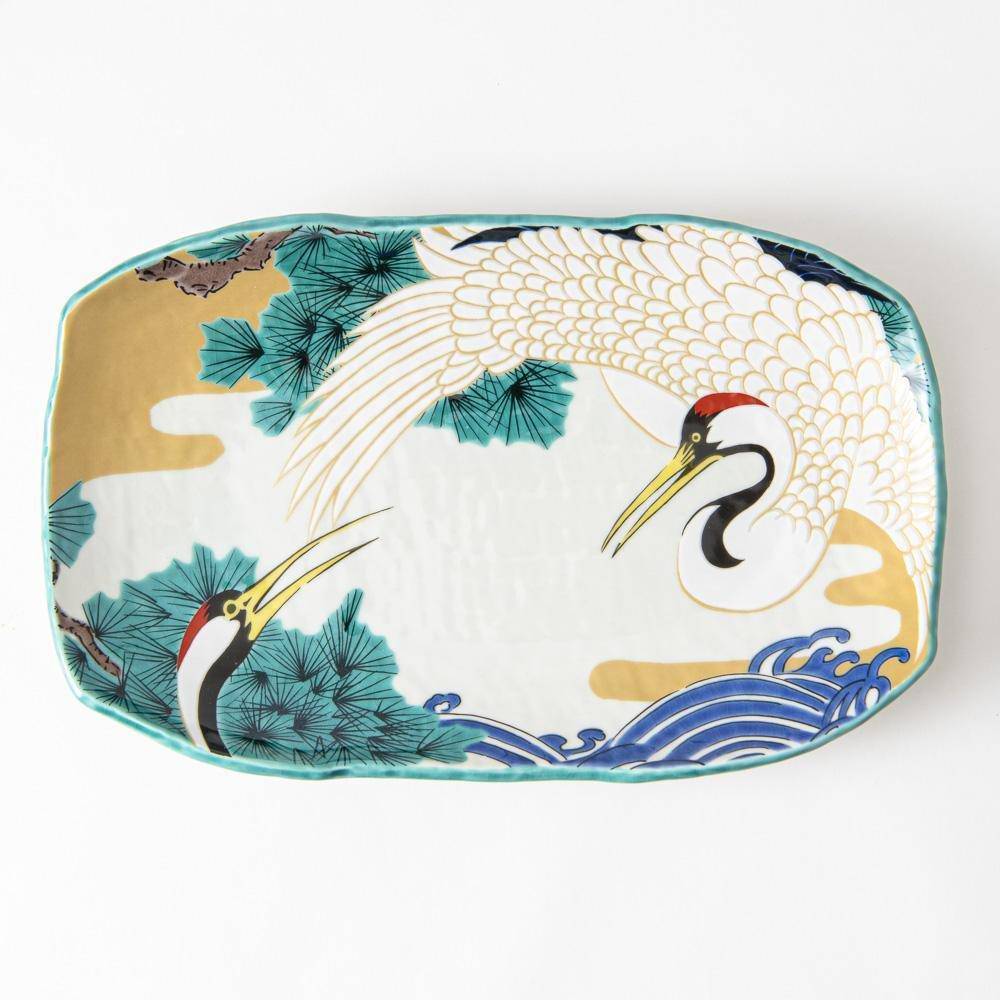
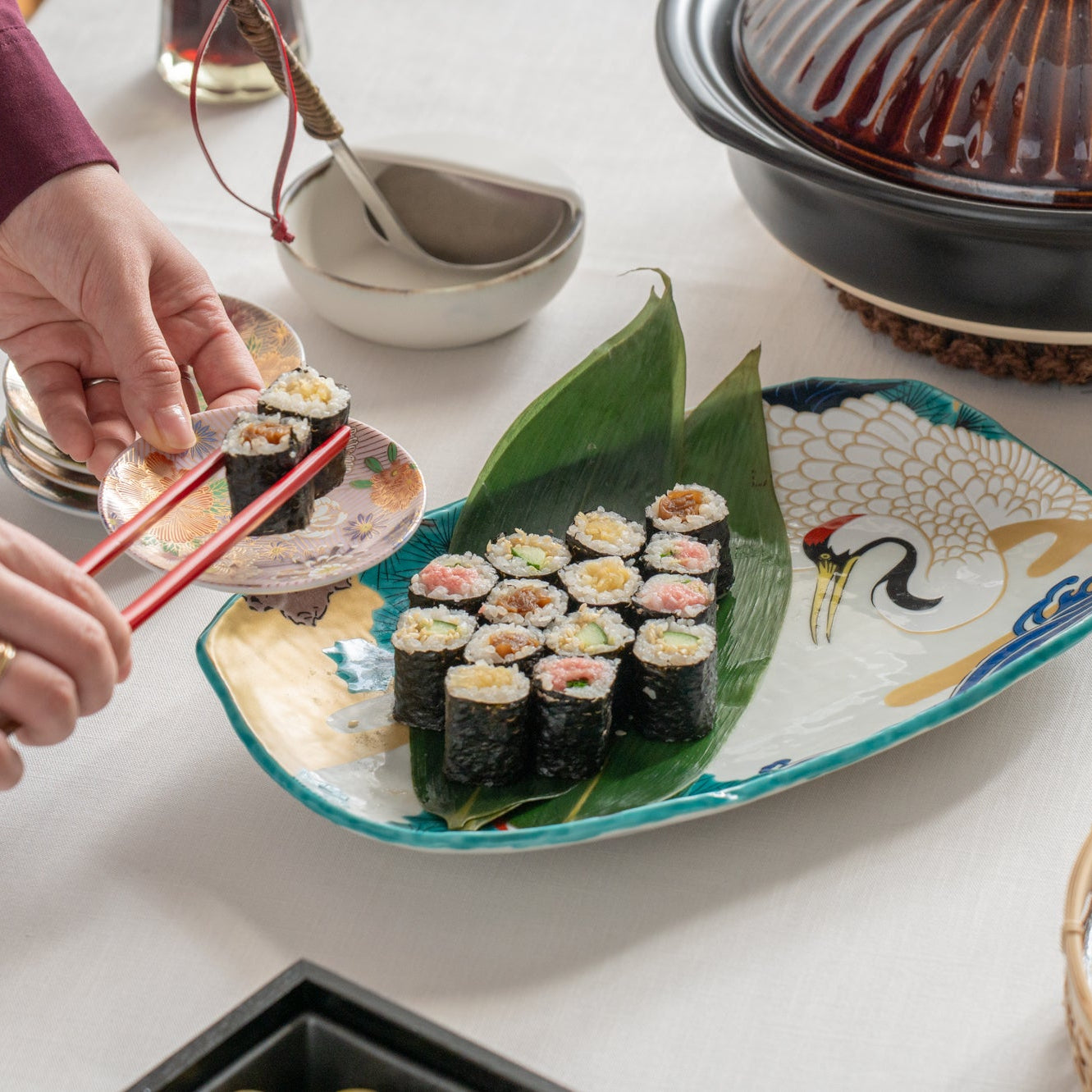













White Crane Platter
Estimated Shipping Widget will be displayed here!
This beautifully crafted platter features the design of two cranes facing each other. The pine trees and waves drawn in the background are common sights on the coast of Japan where pine trees are often planted. It is an eye-catching plate with beautiful colors and bold composition of Kutani color.
It is hand-painted by brush, using Japanese paint called wa-enogu which is one of the remarkable elements of Kutani ware, as you can see the painted part is slightly thickened.
The large platter is perfect for serving main dishes, an assortment of appetizers, or sushi. It can be set as a decorative art piece.
DETAILS
| Quantity | 1 |
| Size |
L 20 cm (7.9 in) x W 32 cm (12.5 in) x H 4 cm (1.5 in) |
| Material | Stoneware |
| Package Type | Paper box |
| Microwave | Yes |
| Dishwasher | Yes |
Maker / Brand
Seikou Kiln, founded in the early Taisho era (1912–1926 CE) in Nomi City, Ishikawa Prefecture, has long been dedicated to the art of Japanese overglaze painting for Kutani ware. Through years of research, the kiln perfected a high-quality technique for transferring designs and patterns using in-house printed sheets. This method preserves the transparency of glassy glazes and the depth of thick overglaze paints, achieving the same richness as traditional hand-painting. Their work has earned prestigious accolades, including recognition in the Japan Tourism Agency's Charming Japanese Souvenir Contest.
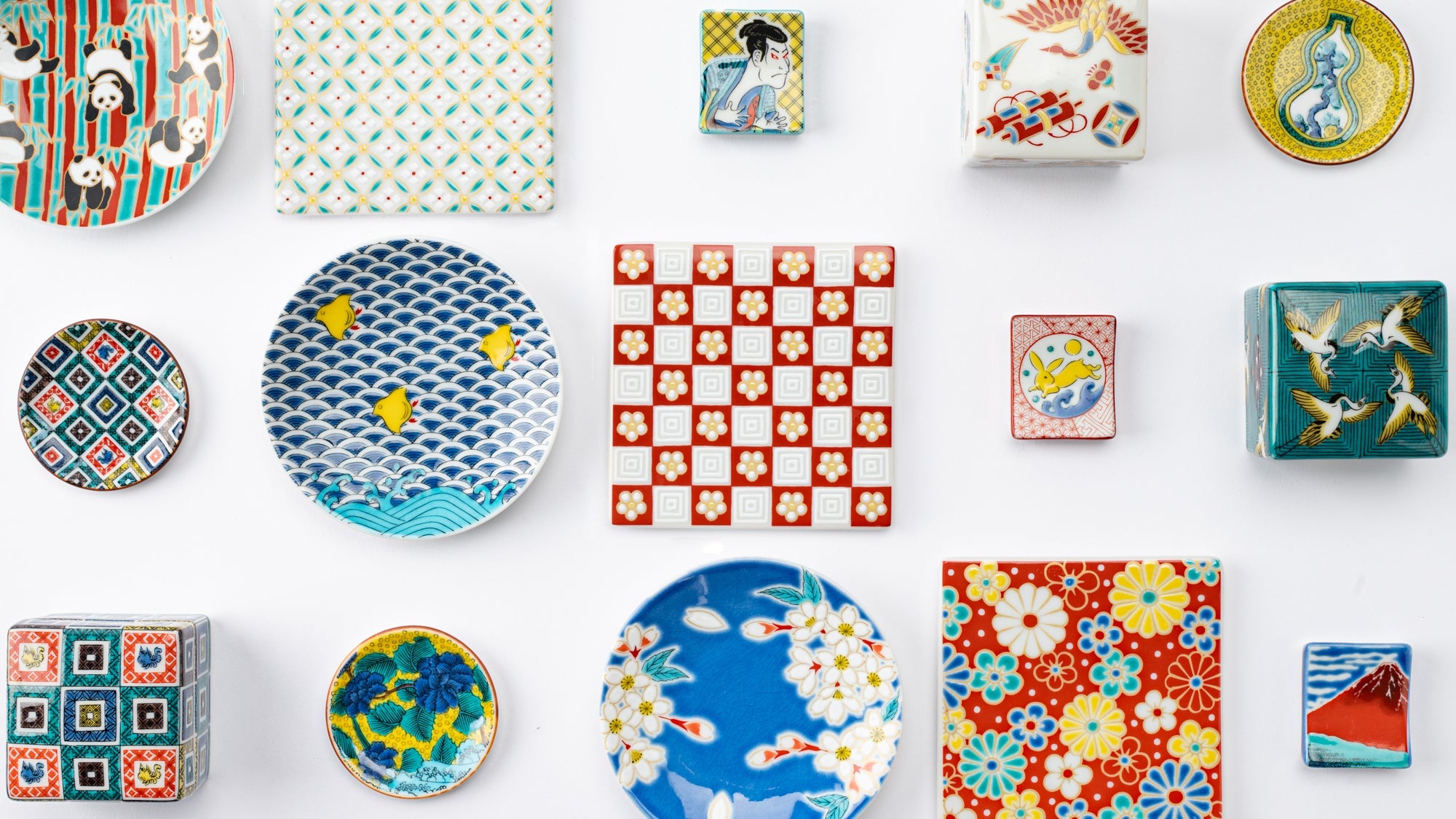
Crafts
Kutani ware is a pottery produced in the Kaga region of Ishikawa Prefecture, with a history spanning over 350 years. It is characterized by the heavy brilliance of the five colors of navy blue, red, purple, green, and yellow that are applied to the bold and daring lines. Its long history has evolved through the tireless efforts and enthusiasm of people who have sought innovation while maintaining tradition.
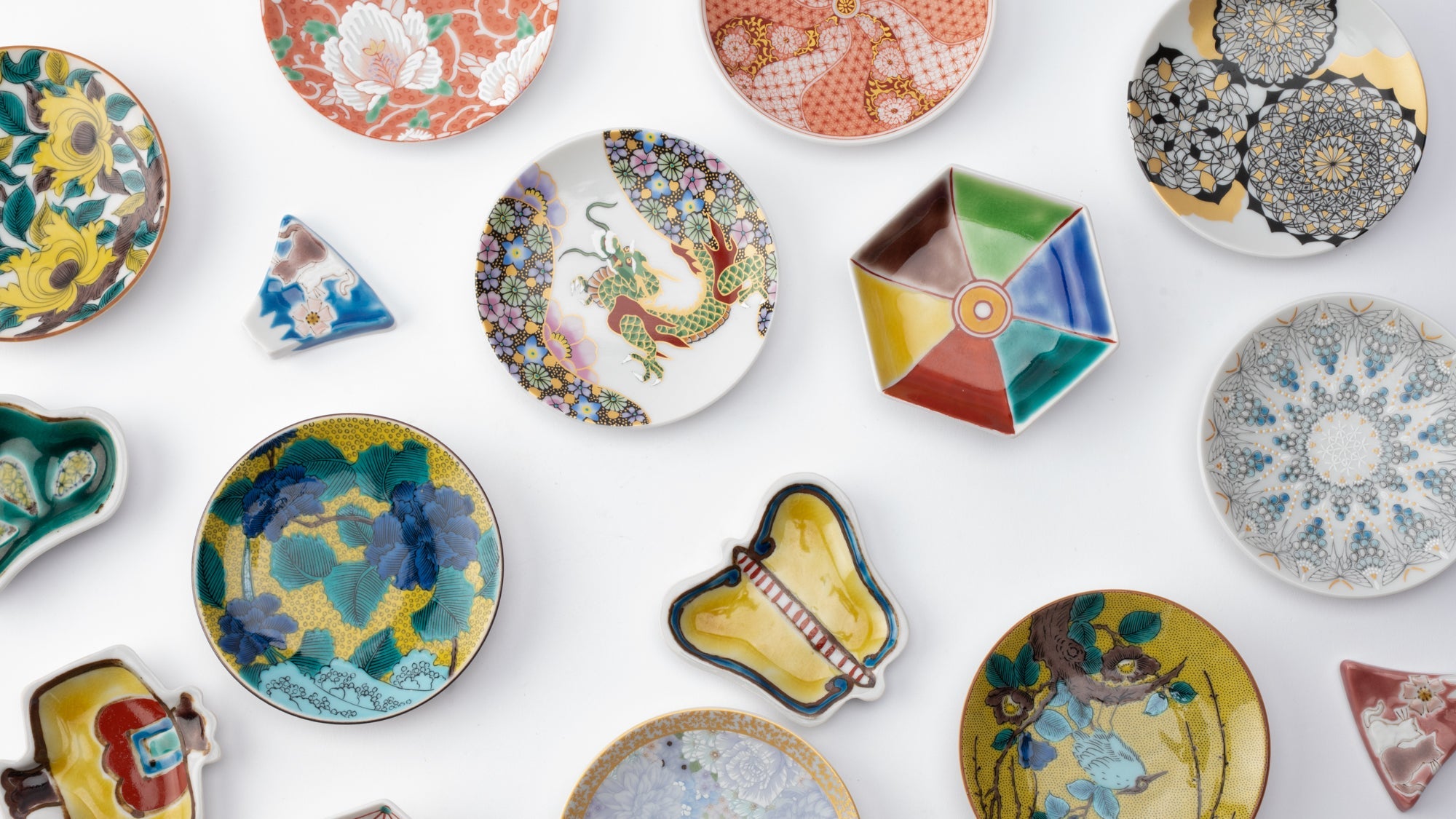
Choose options















Platters
This collection showcases plates over 31 cm (12.2 in), perfect for placing at the center of the table for shared meals. Whether presenting main dishes or ingredients for a hand-rolled sushi party, these versatile serving plates are ideal for any gathering.
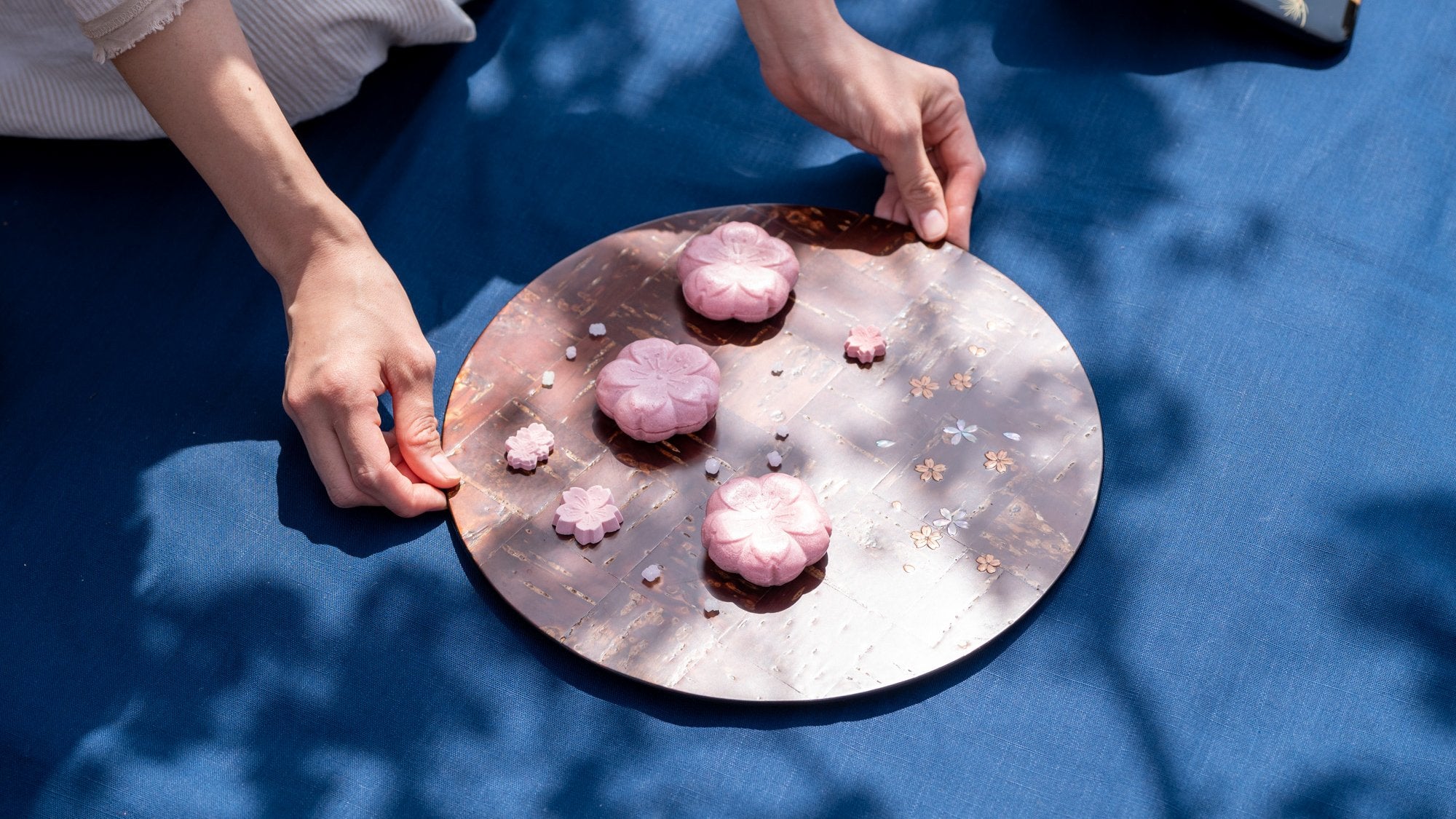
Crane
From our tableware and dinnerware collection, we have gathered products with a crane motif. We hope you will find some great products that will help you create a beautiful table setting.
